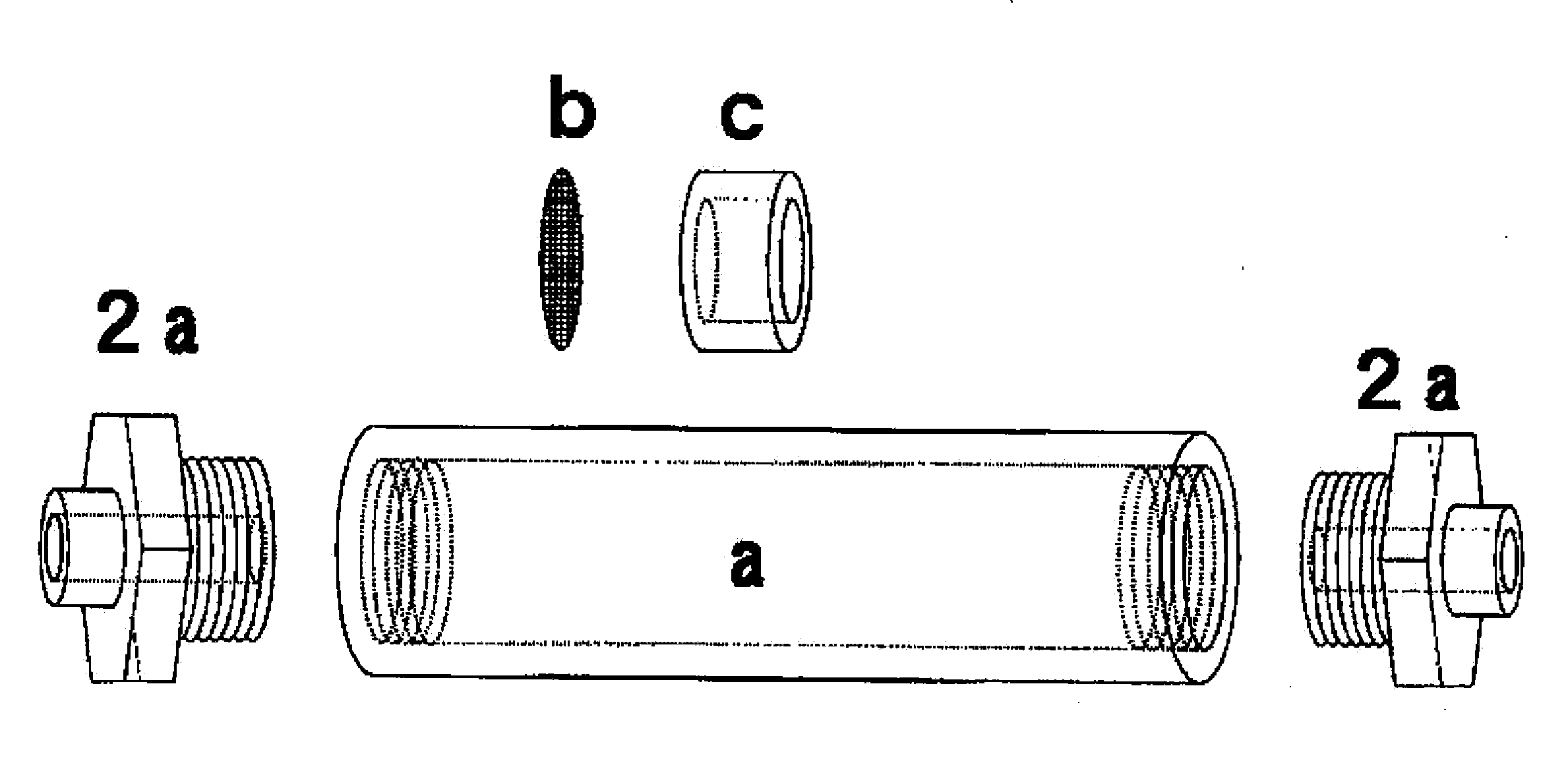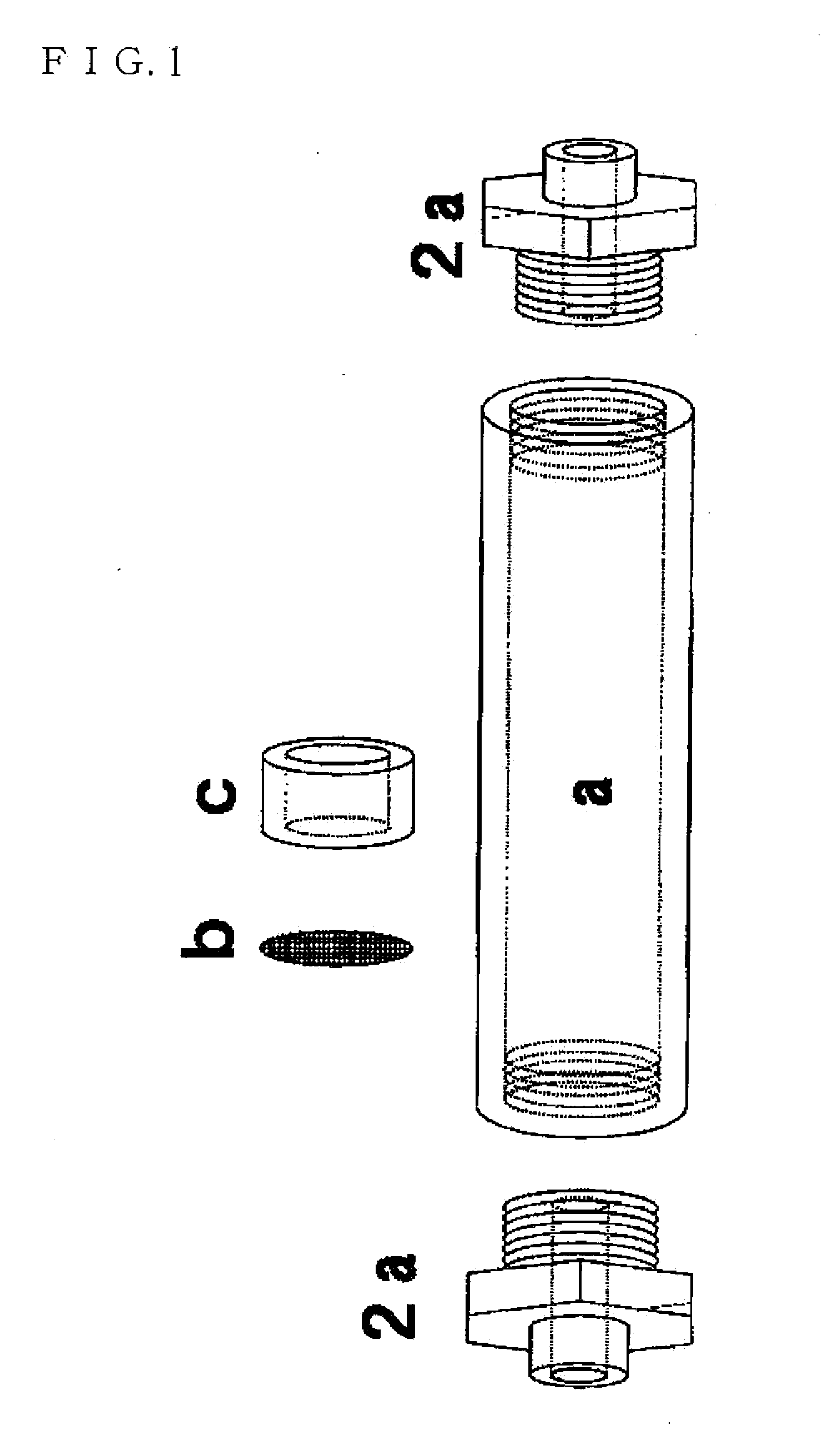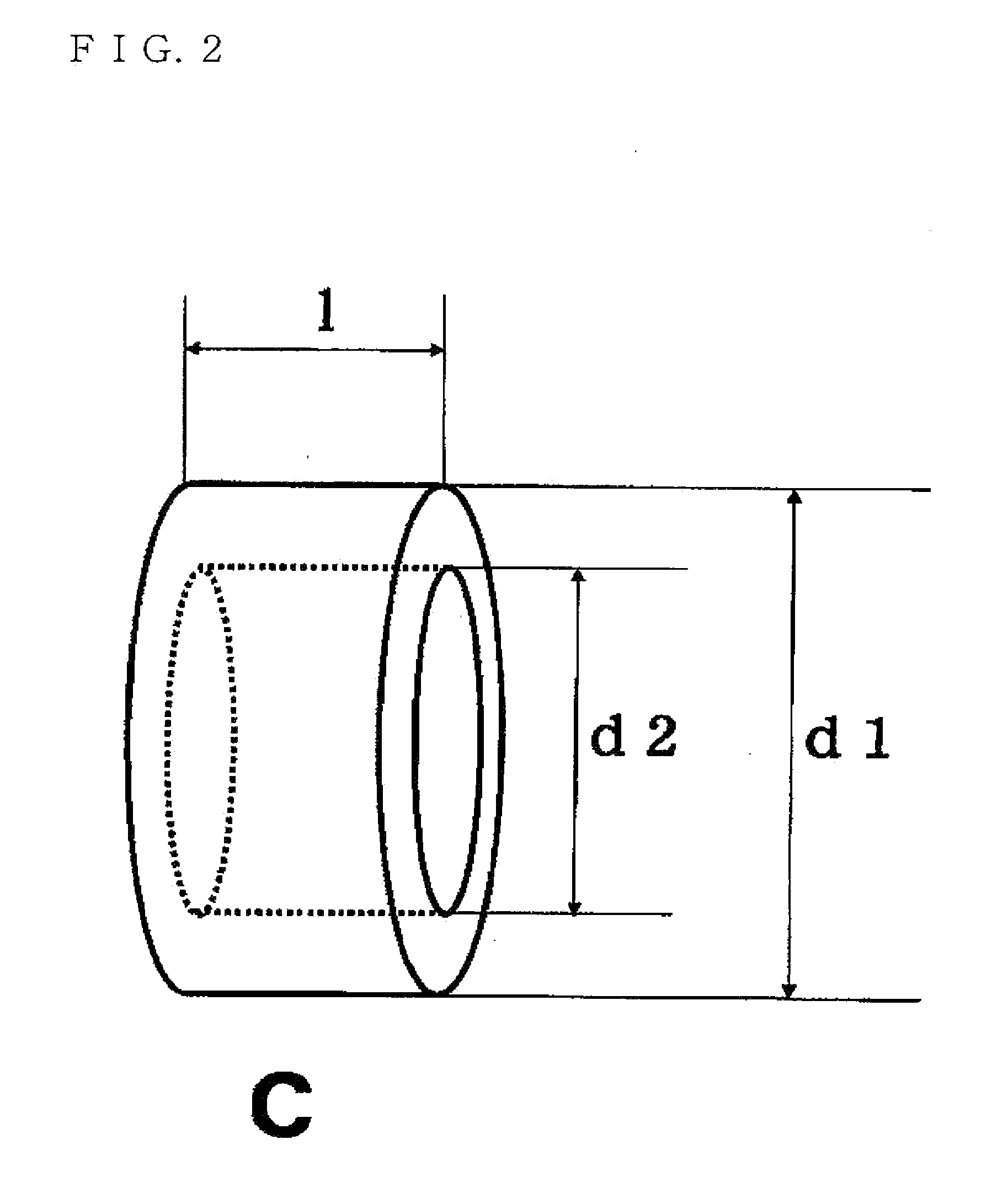Method and apparatus for controlling particle diameter and particle diameter distribution of emulsion particles in emulsion
a technology of emulsion particles and emulsion, which is applied in the direction of synthetic resin layered products, chemical/physical processes, natural mineral layered products, etc., can solve the problems of water-based medium contaminated by transferred fine particles, significant differences in the properties of obtained emulsions, and differences in spreadability on the skin, so as to achieve easy scale-up and maintenance, easy control, and simple structure
- Summary
- Abstract
- Description
- Claims
- Application Information
AI Technical Summary
Benefits of technology
Problems solved by technology
Method used
Image
Examples
manufacturing example 1
[0073]An emulsification apparatus was produced by inserting, into a cylindrical casing having an inner diameter of 20 mm, 10 units each composed of a gauze including a main gauze of 1400 mesh and a spacer having a length of 10 mm and an inner diameter of 15 mm. The length of the casing was about 120 mm.
[0074]Naphtesol being a hydrocarbon-based solvent (product of NIPPON OIL CORPORATION) and an aqueous solution of a dispersing agent (1 percent by mass of PVA205, product of KURARAY Co., Ltd.) were used as the raw materials for emulsification. The raw materials were introduced into the emulsification apparatus at flow rates of 100 ml / min and 200 ml / min using separate plunger pumps to obtain an O-W type emulsion. The volume average diameter of the liquid droplets of the dispersed phase of the emulsion (hereinafter referred to as a “volume average particle diameter”) and the particle diameter distribution of the liquid droplets were measured using the Coulter Counter (Multisizer II, prod...
manufacturing example 2
[0077]The same procedure as in Manufacturing Example 1 was repeated except that the number of the units in the casing was 40, whereby an emulsion was manufactured. The volume average particle diameter of the dispersed phase was 18 μm, and the CV value was 24%.
manufacturing example 3
[0078]The same procedure as in Manufacturing Example 1 was repeated except that a main gauze with 250 mesh was used, whereby an emulsion was manufactured. The volume average particle diameter of the dispersed phase was 55 μm, and the CV value was 25%.
PUM
| Property | Measurement | Unit |
|---|---|---|
| particle diameter distribution | aaaaa | aaaaa |
| particle diameter | aaaaa | aaaaa |
| linear velocity | aaaaa | aaaaa |
Abstract
Description
Claims
Application Information
 Login to View More
Login to View More - R&D
- Intellectual Property
- Life Sciences
- Materials
- Tech Scout
- Unparalleled Data Quality
- Higher Quality Content
- 60% Fewer Hallucinations
Browse by: Latest US Patents, China's latest patents, Technical Efficacy Thesaurus, Application Domain, Technology Topic, Popular Technical Reports.
© 2025 PatSnap. All rights reserved.Legal|Privacy policy|Modern Slavery Act Transparency Statement|Sitemap|About US| Contact US: help@patsnap.com



